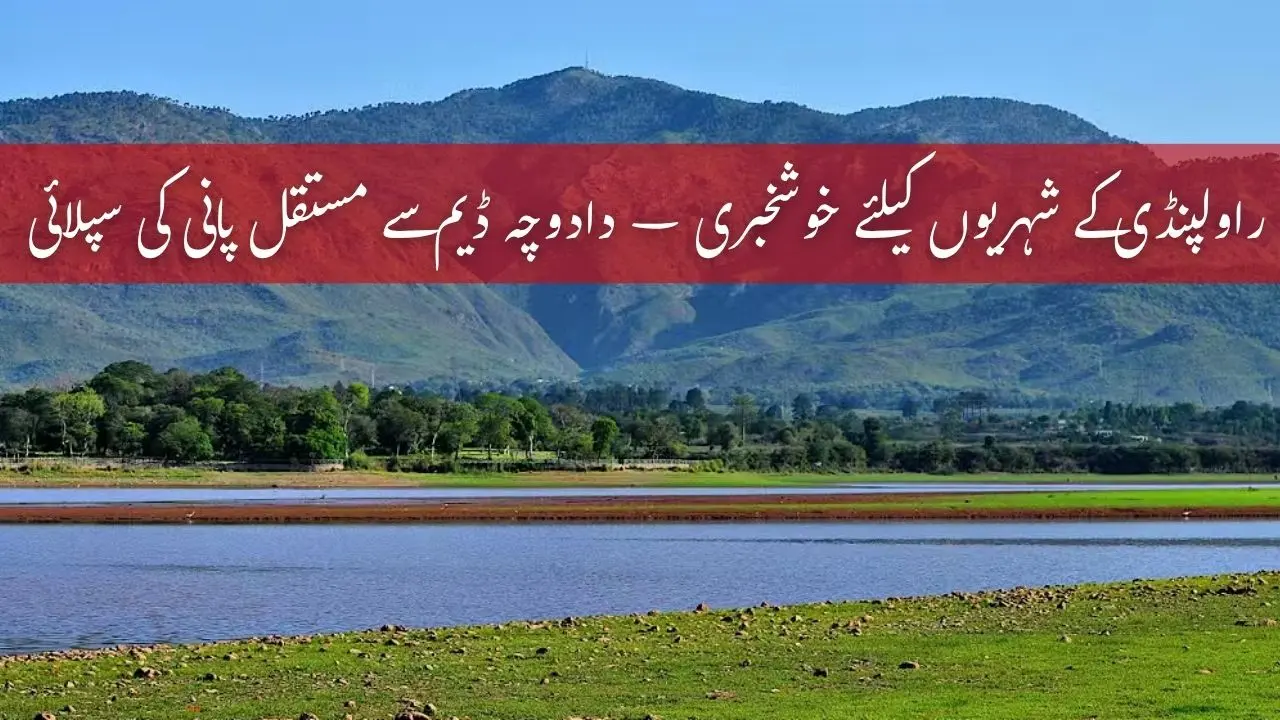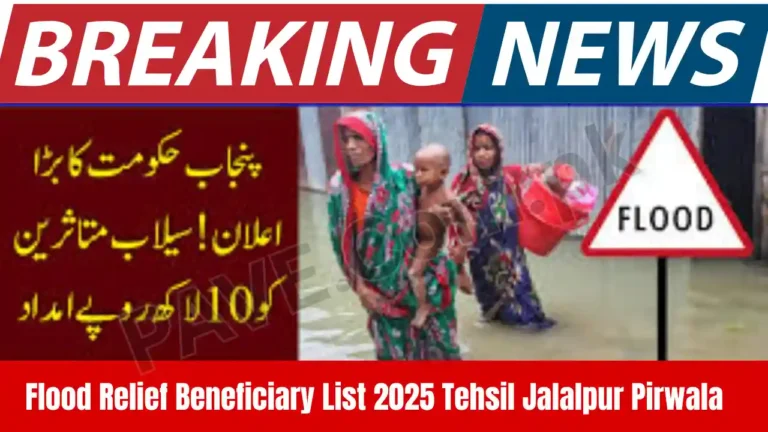Rawalpindi to Get 35 MGD Water from Daducha Dam – WASA Update
Rawalpindi to Get 35 MGD Water from Daducha Dam – this big announcement has brought hope for millions of residents who have long suffered from water shortages. For decades, the people of Rawalpindi relied on old dams and underground water, but now a new chapter is about to begin. The Water and Sanitation Agency (WASA) has confirmed that the Daducha Dam will supply 35 million gallons daily (MGD) to the city, ensuring a sustainable and clean water future.
The project has officially started with a Rs. 43 million feasibility study, which will be completed within two months. This study will map out technical designs, surveys, land acquisition, and the construction of a modern filtration plant at the site. Experts say that once the project is completed, Rawalpindi to Get 35 MGD Water from Daducha Dam will no longer remain a headline but a daily reality for the people.
Water scarcity has become a serious issue in the city. Currently, Rawalpindi depends on Rawal Dam, Khanpur Dam, and hundreds of tube wells, but these resources are no longer enough. With groundwater levels dropping and contamination risks rising, the arrival of Daducha Dam is seen as a game changer. The promise that Rawalpindi to Get 35 MGD Water from Daducha Dam brings new hope for better living standards, reduced tanker dependency, and affordable drinking water for every household.
Current Water Supply in Rawalpindi
Rawalpindi’s water supply is heavily dependent on limited resources. At present:
- Rawal Dam provides about 23 MGD
- Khanpur Dam provides around 6 MGD
- 480 tube wells contribute nearly 35 MGD
This means more than 60% of the water comes from groundwater sources, which experts warn are no longer sustainable. The underground water table is declining fast due to excessive pumping and poor recharge capacity.
Why Daducha Dam is Critical for Rawalpindi
Rawal Dam, one of the city’s main sources, has already completed 56 years of its useful life. With the increasing population and demand, it can no longer meet the city’s growing water needs. This is where Daducha Dam comes in as a long-term solution.
Key benefits of Daducha Dam water supply include:
- Stable water source → ensures a daily supply of 35 MGD
- Lower contamination risks → safer and cleaner drinking water
- Reduced pumping costs → saving millions annually in electricity bills
- Groundwater recharge → reduces pressure on tube wells
- Environmental protection → promotes sustainable water management
Check Also: Affordable Honda Motorcycles in Pakistan – Own Yours for Just Rs. 13,000 Per Month
Scope of the Feasibility Study
The ongoing feasibility study worth Rs. 43 million will cover:
- Surveys and mapping of the water supply routes
- Technical designs for pipelines and filtration plant
- Land acquisition required for the project
- Environmental and social impact assessments
- Financial models for long-term project execution
This study is expected to be completed in two months, after which the government will approve the PC-I for execution.
Impact on Residents of Rawalpindi
The Daducha Dam water supply will bring direct benefits to millions of residents, especially low-income groups who currently suffer from water scarcity.
- Continuous supply of clean drinking water
- Reduced dependency on tankers and borewells
- Improved public health with fewer waterborne diseases
- Fair distribution through WASA’s planned supply network
With the city’s population growing rapidly, this project will be a game changer for water security.
Check Also: Pakistan Cricket Matches 2025 – Complete Schedule
Economic and Social Benefits
Beyond water supply, the project offers multiple economic and social advantages:
- Lower costs for households – families will spend less on buying water tankers.
- Job creation – the construction and operation phases will generate employment.
- Better urban planning – reliable water will support housing schemes and industries.
- Improved quality of life – safe drinking water reduces healthcare expenses.
Challenges Ahead
While the project is promising, some challenges need attention:
- Land acquisition issues may delay the pipeline and filtration plant construction.
- Environmental concerns must be carefully addressed to protect ecosystems.
- Funding and timely execution will be critical for success.
WASA has assured that these challenges will be tackled through careful planning and stakeholder consultations.
Check Also: Faysal Bank Honda CD 70 Installment Scheme 2025 – Apply Online Now
Comparison of Current vs Future Water Supply
| Source | Current Supply (MGD) | Future with Daducha (MGD) |
|---|---|---|
| Rawal Dam | 23 MGD | 23 MGD (ageing) |
| Khanpur Dam | 6 MGD | 6 MGD |
| Tube Wells | 35 MGD | Reduced usage |
| Daducha Dam | 0 | 35 MGD |
| Total | 64 MGD | 99 MGD (after project) |
This shows a 54% increase in supply once the Daducha project is completed.
Government’s Vision for Water Security
The Punjab government has been pushing for modern water management solutions across the province. This includes:
- Construction of new dams and reservoirs
- Rehabilitation of existing water supply systems
- Introduction of smart water meters
- Public awareness campaigns to conserve water
The Daducha Dam project aligns perfectly with this vision.
Check Also: Punjab Learner Driving License 2025 – Apply Online with Dastak App at Home
Frequently Asked Questions (FAQs) about Daducha Dam water supply 2025:
Q1: What is the capacity of Daducha Dam for Rawalpindi?
The dam will provide 35 million gallons daily (MGD) of water to Rawalpindi.
Q2: How long will the feasibility study take?
The study will be completed in two months and will include surveys, designs, and assessments.
Q3: Who is conducting the study?
A consultant firm hired by WASA is carrying out the feasibility study.
Q4: Why is Rawalpindi facing water shortages?
The city relies heavily on groundwater and old dams. Groundwater recharge is low, and Rawal Dam has completed its lifespan.
Q5: When will residents start receiving water from Daducha Dam?
After the feasibility study and PC-I approval, the project will begin. Water supply could start within a few years depending on construction speed.
Q6: What will happen to tube wells after Daducha Dam supply begins?
Their usage will be reduced to avoid over-extraction of groundwater.
Q7: Will low-income groups benefit from this project?
Yes, the project aims to provide affordable, clean water especially to poor households.
Q8: What is the cost of the feasibility study?
The feasibility study costs Rs. 43 million.
Q9: Will there be a filtration plant at the dam site?
Yes, the consultant will design a filtration plant to ensure water safety.
Q10: How much will Rawalpindi’s water supply increase after this project?
From 64 MGD currently to 99 MGD after the project – a 54% increase.
Conclusion – Rawalpindi to Get 35 MGD Water from Daducha Dam
The Daducha Dam water supply project is a landmark development for Rawalpindi. With a Rs. 43 million feasibility study already underway, WASA is preparing the groundwork for a reliable, clean, and sustainable water supply system.
This initiative is not only about meeting current demand but also about future-proofing the city against water crises. By reducing dependence on groundwater and ageing dams, the project ensures a safer, healthier, and more affordable water future for all residents.
Rawalpindi’s citizens can finally look forward to a time when clean drinking water flows reliably to every household.







